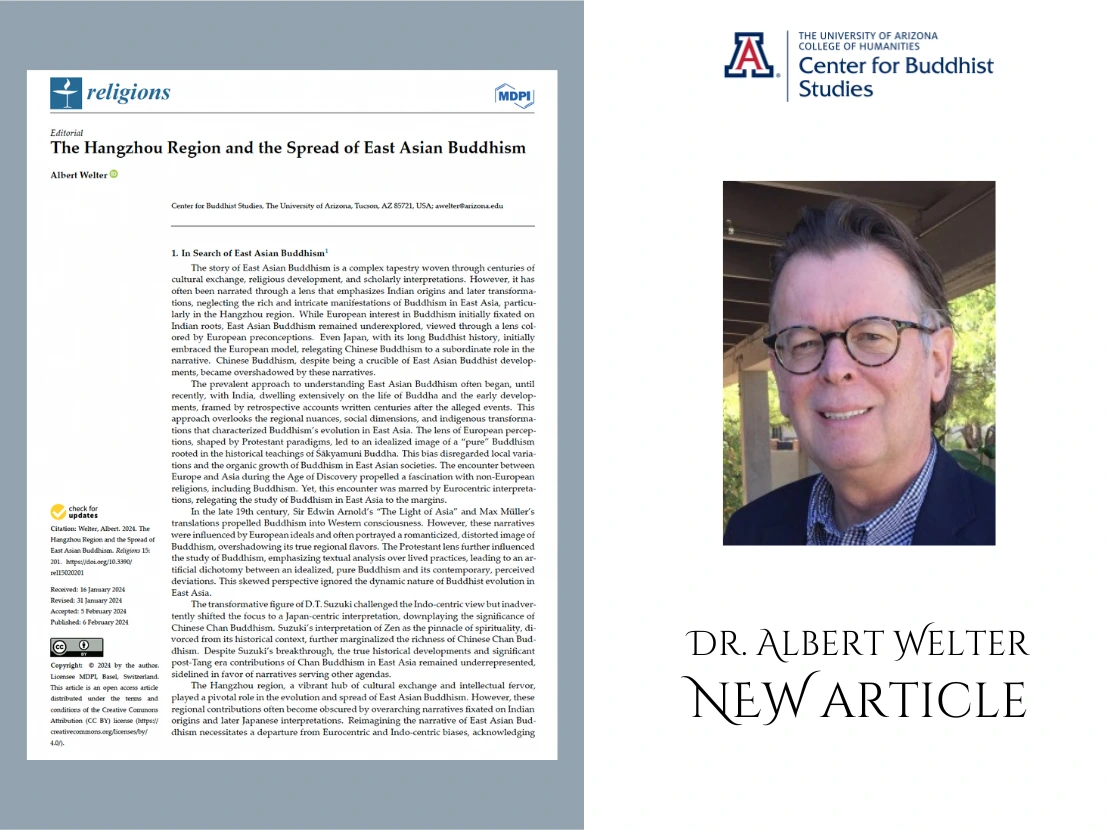
Dr. Albert Welter was the editor of a Special Issue of Religions dedicated to the theme of “Buddhist Culture in the Greater Hangzhou Region (Jiangnan) and Its Dispersion throughout East Asia.” Additionally, he contributed a peer-reviewed article titled "The Hangzhou Region and the Spread of East Asian Buddhism," published in Religions 2024, 15(2), 201; https://doi.org/10.3390/rel15020201. Congratulations to Dr. Welter for his significant contributions to this special issue.
Special Issue Information:
This Special Issue aims to center East Asian Buddhism in Hangzhou as the capital of the Jiangnan region. It is an ambitious effort to reformulate the history of East Asian Buddhism from a thoroughly East Asian perspective. Buddhist Studies incorporates East Asia in meaningful ways, but has tended toward Indo-centrism for much of its history. This makes sense if one considers India as the birthplace and homeland of Buddhism. Yet, the history of Buddhism covers 2500 years, and for the last 1000 years or so, India has ceased to be a significant ongoing source of Buddhist inspiration, functioning more in passive memory than as active agent. This is especially true in the case of China, which actively reimagined Buddhism in unique and indigenous ways to form an intrinsically authentic form of East Asian Buddhism. The region became especially prominent and noteworthy for its promotion of Buddhism during the Wuyue kingdom (892–978) in the Five Dynasties period (907–959). As the capital of China during the Southern Song dynasty (1127–1279), Hangzhou was the focal point for developments that transformed the East Asian Buddhist landscape.
From the Hangzhou/Jiangnan region, new forms of Buddhism, as well as reenergized versions of old forms, spread throughout East Asia, especially to Japan and Korea, creating unique forms of East Asian Buddhism which remain viable in the present day. For example, Mt. Tiantai, a major Buddhist center in the region, served as a terminus of the Tiantai/Tendai/Ch’ŏnt’ae School; Chan/Zen/Sŏn became a major tradition strongly rooted in the Hangzhou/Jiangnan region; various Pure Land developments were nourished through developments in the region.
In short, Hangzhou and the Jiangnan region became a new homeland for East Asian Buddhism, serving as impetus for Buddhist cultural creativity and imagination. One of the features of the Special Issue is its regional and inter-regional approach to Chinese and East Asian Buddhism, focusing on prominent local developments and figures as instrumental for the development of Buddhist cultural artifacts, both material and religious. While the focus is on Buddhism, the Special Issue also intends to feature developments, such as the literature, economics, international trade, and medicine where Buddhism plays a peripheral but important role.

